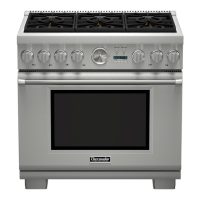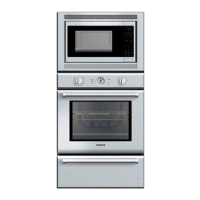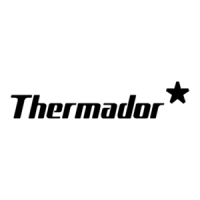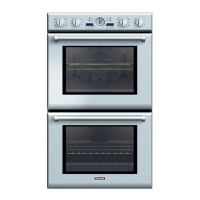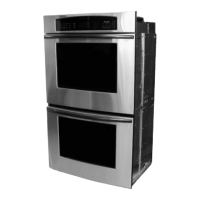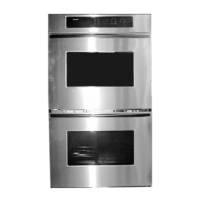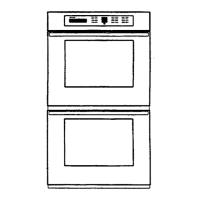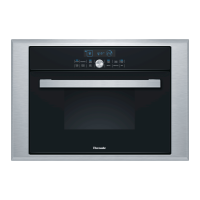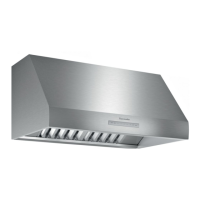Using the Oven | 44 |
Dehydrating Foods with Convection Bake
Use the Convection Bake to dry and preserve fruits and vegetables.
Tips:
• Drying times vary depending on the moisture and sugar content of the food, the size of the pieces, the amount being
dried and the humidity in the air.
• Dry most fruits and vegetables at 150°F.
• Check food at the minimum drying time.
• It is best to use drying racks (not included) so that air can flow around the food. Do not place food directly on a baking
sheet or pan. Food needs to be elevated to ensure even drying.
• Multiple drying racks can be used simultaneously.
• Racks #2 and #4 or #1, #3 and #5 can be used for multiple rack dehydrating. Use rack #3 if only dehydrating one rack.
• Dehydrating meat is not recommended due to food safety concerns.
• Consult a food preservation book, county Cooperative Extension Office or library for additional information.
FOOD ITEM PREPARATION
APPROX.
DRYING
TIME (HRS)
TEST FOR DONENESS
FRUIT
Apples Dipped in ¼ cup lemon juice and 2 cups water,
¼'' slices.
8 – 15 Slightly pliable
Bananas Dipped in ¼ cup lemon juice and 2 cups water,
¼'' slices.
8 – 15 Slightly pliable
Cherries Wash and towel dry. For fresh cherries, remove
pits.
7 – 18 Pliable leathery, chewy
Orange peels Orange part of skin thinly peeled from oranges. 1 – 4 Dry and brittle
Orange slices ¼'' slices of orange. 9 – 16 Skins are dry and brittle, fruit is
slightly moist
Pineapple
rings, canned
Towel dried. 8 – 13 Soft and pliable
Pineapple
rings, fresh
Towel dried. 7 – 12 Soft and pliable
Strawberries Wash and towel dry. Sliced ½'' thick, skin down
on rack.
9 – 17 Dry and brittle
VEGETABLES
Peppers Wash and towel dry. Remove membrane of
peppers, 1'' coarsely chopped pieces.
13 – 17 Leathery with no moisture inside
Mushrooms Wash and towel dry. Cut thin slices, ǩ'' thick. 5 – 12 Tough and leathery, dry
Tomatoes Wash and towel dry. Cut thin slices, ǩ'' thick,
drain well.
5 – 12 Dry, brick red color
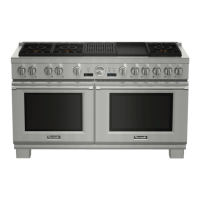
